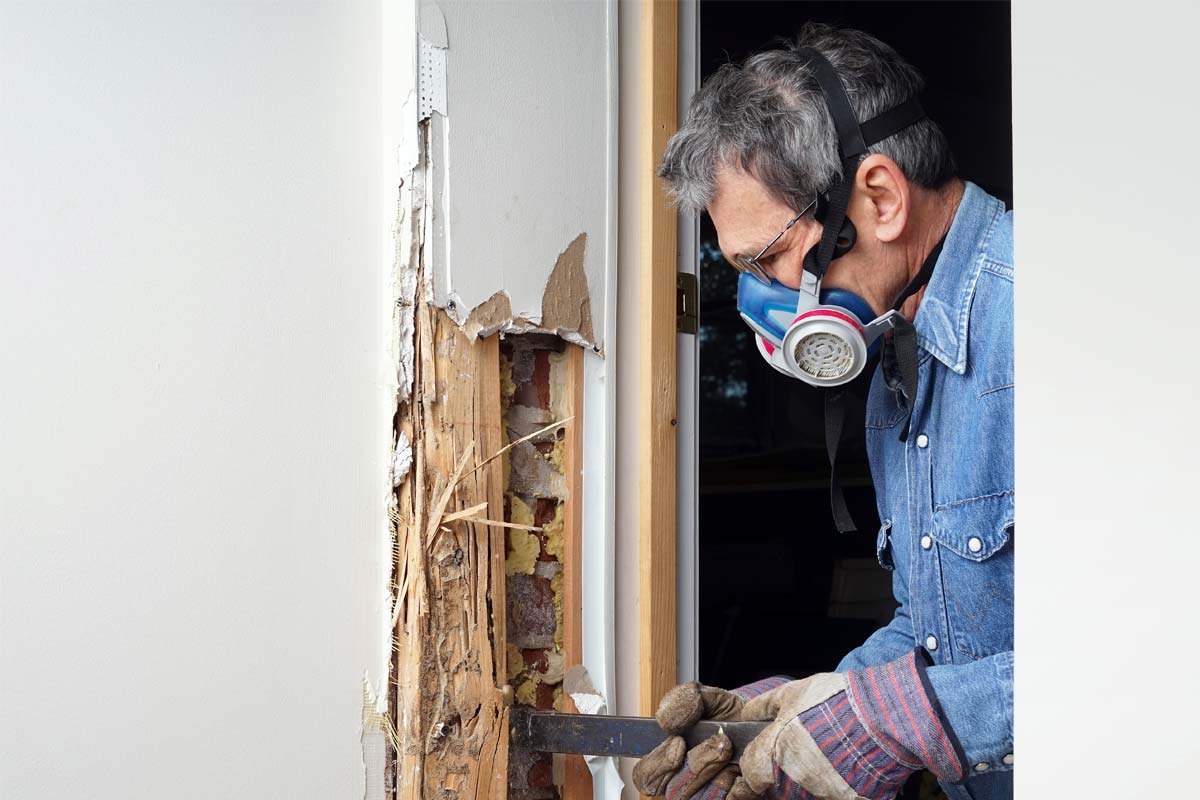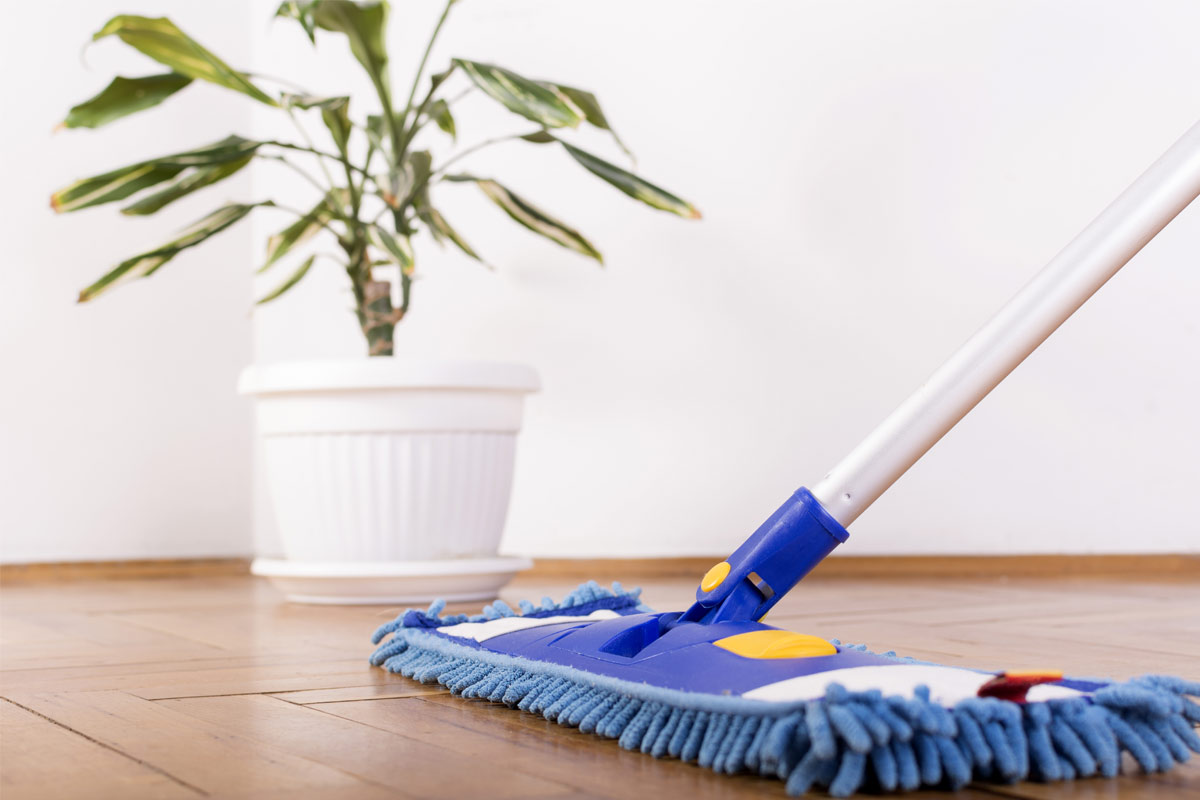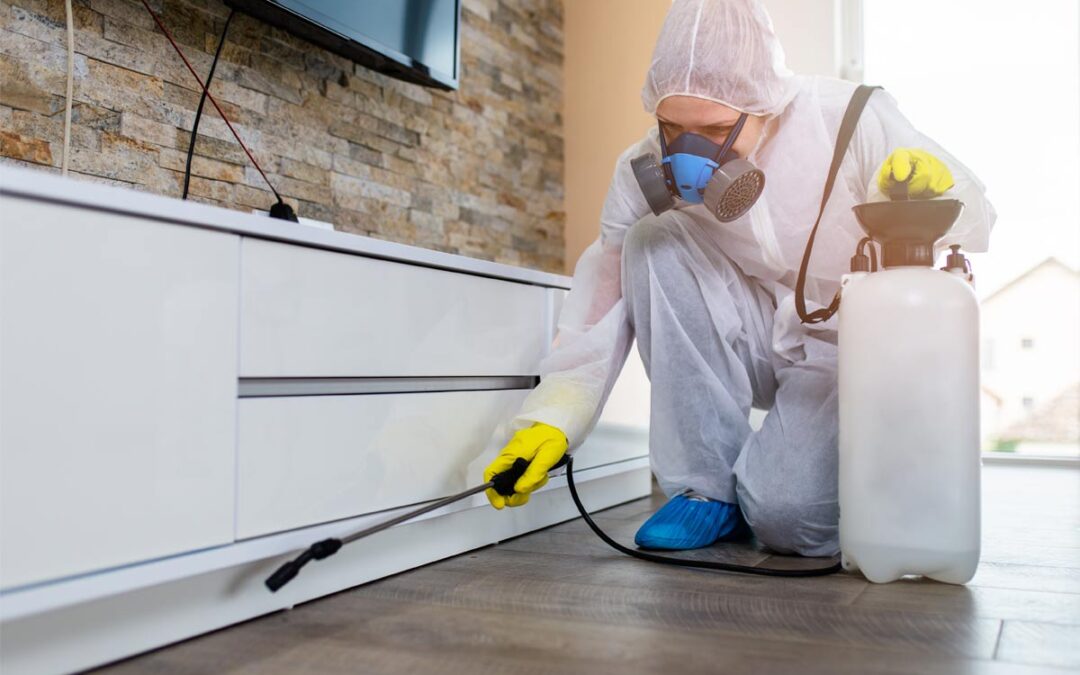Basements provide the perfect environment for many pests due to their dark, damp, and secluded nature. If you notice signs of unwanted visitors, identifying them early can help prevent infestations and costly damage.
According to a study, Integrated Pest Management (IPM) combines preventative and curative pest management techniques to provide effective, economical, and environmentally friendly pest control (Carroll, 2022). By recognizing 9 common basement pests and their habits, you can take proactive steps to keep your space pest-free.
1. Rodents (Mice and Rats)
Mice and rats are among the most common pests found in basements. These rodents seek shelter in warm, undisturbed areas and can squeeze through small openings to get inside.
- Signs of Infestation: Look for droppings, gnaw marks on wood and wiring, nesting materials like shredded paper or fabric, and greasy rub marks along walls.
- Where They Hide: Basements cluttered with boxes, furniture, and insulation provide ideal nesting spots.
- Risks: Rodents can carry diseases (such as the Hantavirus), contaminate food, and cause structural damage by chewing on electrical wiring and wood.
Rodent problems can escalate quickly, especially in areas where cold weather drives them indoors. Homeowners dealing with persistent infestations may need to consider professional pest control in Midland or their local area for safe and effective removal.
2. Spiders
Spiders are commonly found in basements due to the abundance of insects they feed on. Most are harmless, but some species, such as the brown recluse or black widow, can pose health risks.
- Signs of Infestation: Cobwebs in corners, windows, and near ceiling beams, along with sightings of live spiders.
- Where They Hide: Dark corners, behind stored items, and in cracks and crevices.
- Risks: Some spider bites can cause skin irritation or allergic reactions, though most species are beneficial for controlling other pests.
3. Cockroaches
Cockroaches thrive in damp, warm areas, making basements an attractive hiding spot. They are nocturnal and often go unnoticed until an infestation has grown.
- Signs of Infestation: Droppings resembling black pepper, shed skins, musty odours, and smear marks along walls.
- Where They Hide: Cracks, crevices, cardboard boxes, and near water sources.
- Risks: Cockroaches spread bacteria, trigger allergies, and contaminate food sources.
4. Silverfish
Silverfish are small, wingless insects with silvery, scale-covered bodies that thrive in humid conditions.
- Signs of Infestation: Holes in paper, wallpaper, books, and clothing; yellow stains on fabric and books.
- Where They Hide: Basements with high humidity, near drains, under furniture, and in cardboard boxes.
- Risks: Silverfish don’t carry diseases but can cause significant damage to paper products, fabrics, and stored items.
5. Centipedes and Millipedes
These multi-legged creatures often make their way into basements, particularly in damp environments.
- Signs of Infestation: Sightings of fast-moving centipedes or slow-moving millipedes, especially after rain.
- Where They Hide: Basements with high moisture levels, under boxes, along baseboards, and near drains.
- Risks: Centipedes are predators that help control other pests, but their bites can cause mild irritation. Millipedes, while harmless, release a foul-smelling fluid when threatened.
6. Termites

While termites are more common in wooden structures, they can also invade basements, particularly if there is moisture and accessible wood.
- Signs of Infestation: Mud tubes on basement walls, hollow-sounding wood, discarded wings, and tiny holes in wood structures.
- Where They Hide: Wooden beams, furniture, and walls with high moisture content.
- Risks: Termites can cause severe structural damage, weakening the integrity of a home over time.
7. Earwigs
Earwigs are easily recognizable by their pincers and elongated bodies. They are mostly harmless but can be a nuisance when they invade basements.
- Signs of Infestation: Sightings of earwigs, particularly in damp areas.
- Where They Hide: Underfloor mats, in cracks, behind stored items, and near water sources.
- Risks: Earwigs don’t pose a serious threat, but their presence in large numbers can be unsettling.
8. Carpet Beetles
Carpet beetles are small, oval-shaped insects that can damage fabrics and stored materials.
- Signs of Infestation: Damaged fabrics, shed skins, and tiny beetles near windows or light sources.
- Where They Hide: Stored clothing, carpeting, furniture, and dark corners of the basement.
- Risks: Carpet beetles can destroy fabric, upholstery, and stored food.
9. Pillbugs and Sowbugs
These moisture-loving crustaceans, also known as roly-polies, often invade basements seeking damp conditions.
- Signs of Infestation: Sightings of small, segmented bugs that curl into a ball when disturbed.
- Where They Hide: Damp corners, under objects, near foundation cracks, and close to water sources.
- Risks: They do not pose health risks but can be a sign of excessive moisture problems in your basement.
Preventing Pest Infestations in Your Basement

Keeping pests out of your basement starts with creating an environment that is less inviting to them. Here are some effective prevention methods:
- Reduce Moisture: Use a dehumidifier and fix leaks to keep humidity levels low.
- Seal Entry Points: Caulk cracks in walls, seal gaps around pipes, and install door sweeps.
- Keep It Clean: Remove clutter, store items in plastic containers instead of cardboard, and vacuum regularly.
- Eliminate Food Sources: Store food in airtight containers and avoid leaving pet food or crumbs exposed.
- Improve Ventilation: Ensure proper air circulation to discourage moisture buildup.
- Address Structural Issues: Repair foundation cracks, damaged screens, and any other openings pests can use to enter.
Take Action Before Pests Take Over
Identifying basement pests early can help prevent larger infestations and potential damage. By recognizing the signs of these common intruders and taking proactive measures, you can keep your basement pest-free.
If the problem persists, professional pest control services can provide effective solutions to eliminate the infestation safely. Homeowners dealing with ongoing pest issues may find that professional pest control in Collingwood is a reliable option to address stubborn infestations.
For expert assistance, contact Mr. Pest Control today at (705) 739-7378. We operate 24/7 and provide reliable pest control solutions to protect your home.



